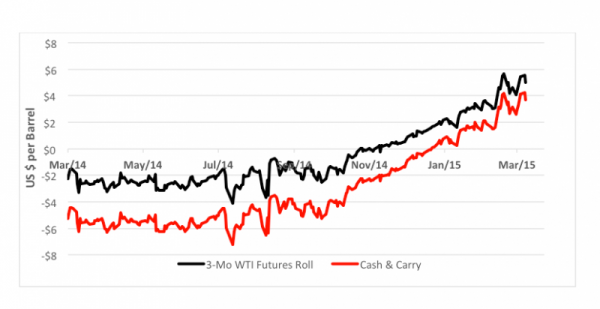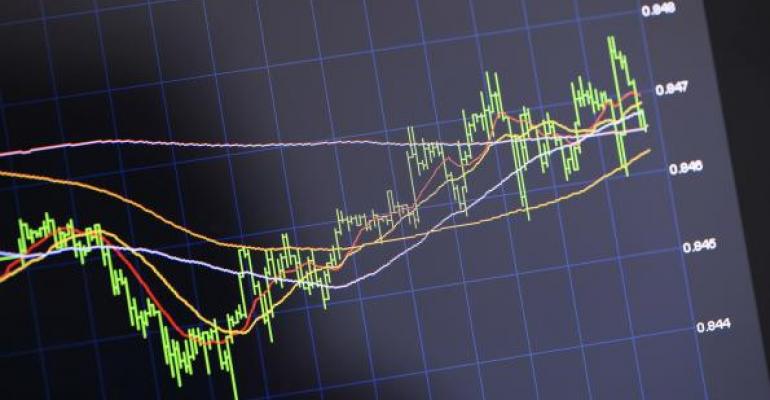You don’t have to get dirty if you want to play with oil. There are myriad ways to capitalize on oil price trends, both short and long, without stepping away from your computer or smartphone. Recently, of course, the money’s been made on the short side. Year to date, the spot price for West Texas Intermediate (WTI) has plunged more than 18 percent. Over the past 12 months crude’s skidded a whopping 57 percent as increased domestic oil output built inventories to record levels.
All this has been good news to holders of bearish exchange-traded oil products. The share price of the $289 million ProShares UltraShort Bloomberg Crude Oil ETF (NYSE: SCO), the segment’s big shot, has soared 30 percent since the top of the year.
“All fine and good,” I hear you say, “but so what?” Maybe you didn’t catch the bear’s tail earlier. Perhaps you think it’s too late to do so. You may think you can’t time shifts in oil price trends. No matter. I’ll let you in on an indicator than can help you apprehend the next big shift in crude’s direction.
Consider the crude oil futures term structure. The spot price for WTI is now at the $43 level while contracts calling for delivery three months out change hands for about $48 per barrel. The $5 premium—often referred to as a “roll” or “contango”—reflects the cost of carrying oil for three months ‘til delivery.
Contangoes build, by and large, in an oil glut and shrink when supply tightens. At the end of 2014, for example, WTI’s three-month roll was just $1.69.
As inventories built up and interest rates wallowed, oil traders capitalized upon diminished carrying costs with “cash-and-carry” operations—buying cargoes in the spot market, storing them for future delivery and selling futures short to lock in sale prices. After stripping out financing and storage costs, the present contango provides an increasingly attractive yield. Regard the chart below: a three-month cash-and-carry can net a savvy trader an 8.5 percent return now.

Here’s the thing: Eventually, the cash-and-carry trade will play itself out. Storage will become more expensive if supply continues to build. Interest rates will eventually rise. The cash-and-carry trade is the proverbial canary in the coal mine, er, oil well. When the cash-and-carry starts to dissipate, it’ll be time for the shorts to look for the exits. It may, too, be the time for oil bulls to start considering re-entry points.
Brad Zigler is REP./WealthManagement's Alternative Investments Editor. Previously, he was the head of marketing, research and education for the Pacific Exchange's (now NYSE Arca) option market and the iShares complex of exchange traded funds.





